Last April, I wrote a story about the gorgeous yellow fields of canola that were growing along I-24 in Cadiz, Kentucky. You can read all about it and see the photos here.

This is Part 2 of that story. The part where after seeing a dramatic increase in the number of yellow fields from the year before, I called the plant manager at the local AgStrong Canola and Sunflower Seed Processing Plant that I had read about in the paper and asked, What gives? Why are we suddenly seeing so much yellow? When he started to explain, I realized I had a lot to learn and asked if I could drive over to meet him and get a tour of the plant. An hour later Mark Dallas was giving my husband and me a tour. Not exactly the way I thought my day would turn out, but I do love a good backroads detour.
As background information, can-o-l-a oil, or “Canada-oil-low-acid,” is made from crushed canola seeds. These seeds are about the size of poppy seeds. Even having seen how canola oil is extracted from these seeds, I still shake my head in disbelief that anything that small, even in huge numbers, could produce something as useful as cooking oil.
A very short botany lesson about plant reproduction:
Flowers have one job, and one job only: to induce reproduction. To that end, flowers that are fertilized will make seeds. Those seeds will make new plants. That the plants grow and produce tasty fruits and vegetables that we like to eat, is bonus. Botanically speaking, those fruits of the plants are actually ripened ovaries full of seeds waiting to be planted. The flesh of fruit is sweet so animals will eat it and disperse the seeds in their travels. Tree nuts work in the same way; Mother Nature is counting on squirrels to bury nuts and thereby assure they will sprout and there will be more trees in the future.
Back to canola flowers and seeds. Like winter wheat, canola is planted in the fall, sprouts, goes dormant in the winter, and perks up again in early spring. It flowers in mid-April, and the seed pods are harvested in mid-June. Farmers like to grow winter wheat and canola because then they can double-crop their fields, meaning there is time left in the warm summer months to raise another crop, such as soybeans, in that same field. By comparison, in most northern climates, there’s only time to grow one crop like wheat or canola.
The photo on the left was taken from a stem of canola flowers on April 17th. The photo on the right was taken on June 12th, just a few days before the pods were harvested by the combines I wrote about in this article.


You may have seen similar seed pods develop in your own gardens if you ever let broccoli or bok choi plants flower and “go to seed.” If you look closely at the flowers below, you can see the early development of seed pods. They look like little spikes. Canola is in the same Brassica family as bok choi and broccoli.

The next photos are of fully mature canola seed pods that I dissected at home to release the seeds within. You can see how small these seeds are. It’s amazing to think cooking oil is extracted from them.


AgStrong contracts with local, family-owned, farms to plant nonGMO canola seeds in their fields. NonGMO means the seed’s genetic material has not been manipulated in a laboratory through genetic engineering to make it more disease or insect resistant. A few other tidbits I learned about growing canola: canola has a 5-6 inch tap route which acts as a natural tiller in the soil, and canola brings in $8.10/bushel compared to wheat’s $5.25/bushel.

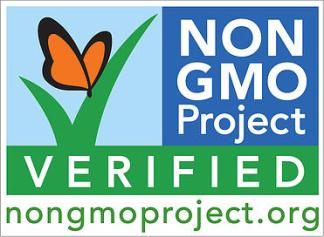
Here is a photo of the canola oil processing plant in Trenton, KY.
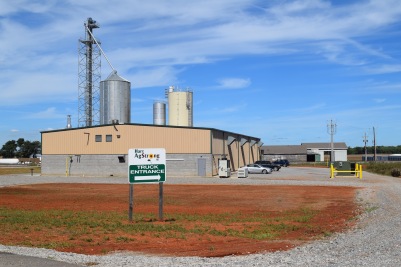
It takes a lot of seeds to make canola oil and these fifty-foot silos are full of them.

The first stop on the tour was the long silver cylindrical oven used to warm the seeds to no more than 120º. Warming the seeds made them easier to press. The low oven temperature kept the process in the category of cold-pressed. The blue conveyor belt brought the warmed seeds to a machine that cracked the hard outer shells.

Next stop was the seed crusher. This was where the magic happened. This machine crushed the seeds and expelled the golden canola oil into the blue well. The oil will still need to go to an offsite refinery before it can be bottled.

Here’s a video of the mechanical magic happening:
Here was the residual seed meal as it dropped onto a conveyor belt.
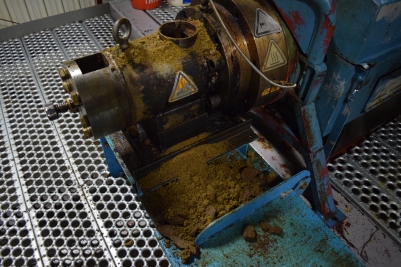
This meal was delivered to the green machine for a second pressing to remove the last traces of oil. At this plant, there are no chemical solvents, like hexane, used to extract these last drops of oil. That’s where the expression “all natural expeller press” comes from.
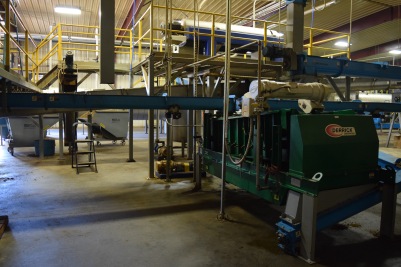
Here’s the residual meal as it came off the conveyor belt after the last of the oil had been pressed from it. The meal is used to feed livestock.
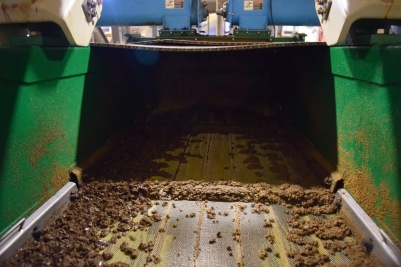
This is the transport room. It’s where the seeds, collected from farmers, are gathered and delivered to the silos for storage. And later, after pressing, where the extracted oil is weighed and distributed, via trucks, to be delivered to Georgia for the final refining process and …

bottling. You can find Agstrong’s Solio Canola Oil at Whole Foods stores.
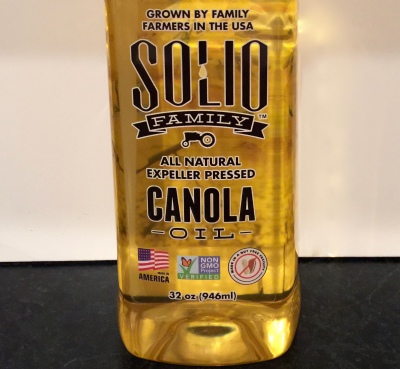

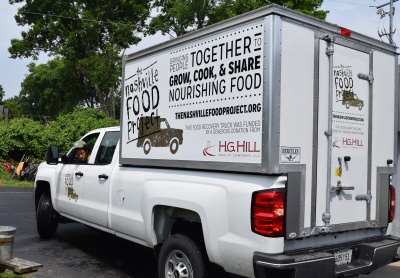

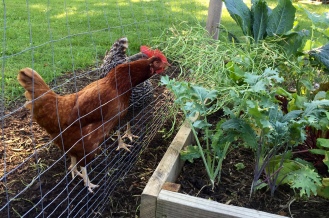
LET’S STAY CONNECTED!
Follow my photos of vegetables growing, backyard chickens hanging out, and dinner preparations on Instagram at JudysChickens.
Never miss a post: sign up to become a follower of the Blog.
© 2014-2017 Judy Wright. All rights reserved. Photos and text may only be used with written consent.

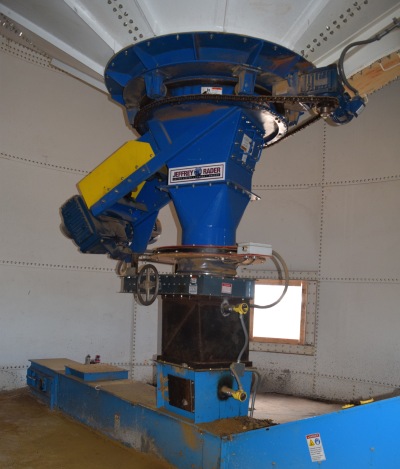

Judy, your blog is my favorite. Great follow up post!!
On Sat, Feb 27, 2016 at 6:38 AM, @judyschickens wrote:
> Judy’s Chickens posted: “Last April, I wrote a story about the gorgeous > yellow fields of canola that were growing along I-24 in Cadiz, Kentucky. > You can read all about it and see the photos here. This is Part 2 of that > story. The part where after seeing a dramatic increase i” >
Thank you dear, Tallu! xo
Thanks Judy! Another very interesting post!
Thank you, Dana!! Great to see you at the A&GS!
What an interesting article, I had no idea. The company is an example of what makes America great! Is Whole Foods the only store that stocks this? It would be great to support American farmers.
Yes, Kathy D! I agree! I have heard they have contracts with other outlets like Costco and Kroger, but I haven’t seen the oil there. I have gotten it at Whole Foods.
Enjoyed the backstory of how Canola is grown and pressed. I tried to e-mail it to a friend but the durn thing wouldn’t accept my typing of the two words needed to send it. Durn.
Judy, your journey of agricultural discovery is amazing…. I’d love to learn more about the connection to the food project, so let’s connect on that sometime.
I’m game! Glad to find a canola oil partnership. Would love to find an olive oil and a cheese partnership:-) Let me know if you have any ideas. BTW, I’m so excited about TNFP’s new relationship with St. Luke’s. Thanks, as always, Craig (and Marion) for always being so supportive of TNFP.
Hate when that happens, Jane. Maybe send a link to the blog?? Judy
Great write-up and snaps, Judy. I wish we lived close enough to share field trips 🙂
I remember the first time I crossed Canada, rolling past miles and miles of ag fields, with an occasional small sign identifying the crop. The little sign reading only “RAPE” was a bit startling! Not surprising that “canola” has caught on so well.
VERY nice that Agstrong is partnering up with TNFP! I will look for their oil at WholeFoods the next time I shop there.
The history of the R&D of canola oil is an interesting story that I talk about briefly in my first canola post. The oil is still called rapeseed oil in England, but my understanding is that the oil is used for industrial purposes and not for consumption. If you come south, I’ll bring you to all my favorite Ag fields in KY. If I travel north, my homeland, I’ll call on you to see your goats and Ag sites.
Thanks so much for following this story from sprouts to our stores to hunger support! This is a cycle that we should have in place for all our food!
Hear, hear! Thanks, Laverne! I enjoyed exploring every aspect of it.
Who knew I’d be fascinated with how canola oil is made! Judy, you’re a great teacher, and a wonderful advocate and “procurer” for NFP!
Thanks, Libba. I appreciate your comments. See you soon! xo
Beautiful! Thanks for sharing the lesson, Judy. I have seen these beautiful yellow fields and wondered what the crop was. I’m going to start using that brand, especially now that I know they support TNFP!
I like the oil, Gloria. It is thick like an olive oil and doesn’t add any flavor to the food. I’m looking forward to seeing yellow again!
Sell sell sell
Sent from Samuel Culotta Jr’s iPad
>
You’ve answered a lot of questions for me. Thanks.
Here’s my question: is canola oil “safe”. After being told that corn oil was good for us, now the news is that it causes inflammation. How does canola compare to olive oil as far as being good for a person? How about cooking with it? Does it have a high smoking point? Thanks in advance for your answers since the food industry isn’t exactly very honest with consumers.
Therese, according to my research, canola oil has a smoke point of 400º. Peanut and soybean oil are 450º so if you are looking for a very high smoke point, they might be better options. Solio is refined which helps make it have a higher smoke point. Solio has the thickness of a good olive oil. I like that it has no flavor or aftertaste, which makes it great for cooking.
There may be other readers who can answer this question, too. I will pass it on to the makers of Solio.
Thanks for writing and for subscribing to the blog! Judy
Judy, thanks for this great investigative reporting and community networking!!! Like other readers said, I would love to join you on your field trips. It sounds like they sometimes happen spontaneously, when you least expect it, huh? You might want to check out a worm “factory” in Grundy County. Local Boy Scouts had a booming business of selling worm castings from it! In the meantime, I’m going to ask Costco to stock Solio Canola Oil! Thanks again, Susie
Thank you, Susie. All of the exploring Kelly and I do is spontaneous. We love driving around and checking out farms, as you can tell. I will definitely look into the worm casting operations in Grundy County. Have never explored that topic.
I have heard that Solio is in some Costco’s. Would love for you to try and get it in ours. Last week, I made a request for Costco to carry the large container of McCormick’s Garlic Pepper.
Thanks for all of your encouragement. xoJudy
Thanks for solving the yellow field mystery while driving through Kentucky via I-24. Great blog Judy!
Thank you, Linda! I appreciate the compliment. I’m obsessed with those yellow fields. Crayola could make a new crayon color called Canola yellow!